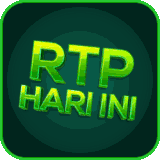Progressive Jackpot
Game Terpopuler
Promosi
Daftar dan Menang Besar dengan MPO777 | Daftar Slot Gacor
mpo777 merupakan salah satu jenis situs judi online terlengkap yang tetap menawarkan banyak memiliki jenis keuntungan menarik di antaranya yaitu ada Deposit DANA tanpa potongan apapun. Slot online dari situs mpo777 ini juga telah menjadi semakin populer akhir-akhir ini karena semakin banyak orang di media sosial memposting jackpot atau kemenangan maksimal.
Di tambah lagi dengan saat ini di mana Anda dapat menjalankan berbagai aktivitas melalui media digital. Pastinya di sini sangat di mudahkan untuk Anda mendapatkan informasi maupun juga konten terkait game slot online. Contohnya saja, ketika di sini Anda mencari kata kunci slot online di kotak pencarian YouTube dan Facebook, orang akan menampilkan menonton game slot sebagai video langsung.
Bandar dari mpo777.com ini sendiri adalah salah satu situs judi online yang sangat cocok untuk anda tambahkan dalam pengalaman slot online terbaik Anda. Tidak hanya permainan slot online, tak banyak yang tahu jika situs mpo777 juga menawarkan banyak permainan lainnya. Di antaranya yaitu poker online, casino online, sabung ayam, permainan sepak bola, tembak ikan, dll.
Dengan kehadiran dari situs judi online mpo777 kami selaku agen di sini juga menjamin setiap kemenangan yang anda terima akan di bayar lunas tanpa potongan apapun. Pada dasarnya kepuasan seluruh member mpo777 menjadi salah satu prioritas kami. Maka situs mpo777 menyajikan layanan yang dapat meningkatkan pengalaman Anda saat bermain game slot gacor.
Seluruh provider slot online di situs mpo777 tidak akan membuat para pemain akan merasakan bosan. Di tambah lagi jumlah bonus yang di tawarkan mpo777.com setiap hari sangat besar dan tidak terbatas. Pastinya dari semua bonus yang situs kami berikan dapat Anda gunakan atau manfaatkan untuk memenangkan jackpot maxwin.
KEUNTUNGAN BERMAIN DI SITUS RESMI SLOT GACOR mpo777
Tanpa di sadari jika di dalam situs mpo777 ini juga telah di sediakan berbagai macam Keuntungan yang bisa di rasakan oleh para pemain. Dengan begitu, jadi tidak heran jika para pemain sudah mulai betah untuk bermain dan bertaruh di dalam situs mpo777. Lalu apa saja kira kira keuntungan yang bisa di rasakan oleh para pemain, di antaranya yaitu:
- MENJAMIN DATA PRIBADI
Banyak dari situs slot online yang tidak memiliki tingkat keamanan hingga 100% sehingga dengan begitu sangat mungkin jika data yang di berikan oleh para pemain akan bocor kemana mana. Dengan begitu maka para pemain akan merasa tidak nyaman pada saat bermain dan bertaruh di dalam situs tersebut.
Berbeda halnya dengan situs kami ini, di mana situs yang satu ini telah memberikan jaminan kepada para pemain baik itu pemula atau yang sudah lama dalam hal keamanan data. Sehingga para pemain tidak perlu merasakan khawatir lagi dengan kebocoran data yang akan terjadi.
- LAYANAN SERVICE 24JAM
mpo777 benar-benar menawarkan layanan terbaik kepada pemain setia slot gacor penjuru Indonesia. mpo777.com menawarkan layanan pelanggan yang tersedia 24 jam sehari, jadi jika Anda memiliki masalah, Anda dapat menghubungi kami secara langsung kapan saja. Melalui fitur Live Chat Anda dapat menghubungi Customer Service yang telah berpengalaman tentunya. Kami dapat membantu Anda untuk menyelesaikan masalah Anda dalam bertaruh di situs slot gacor.
- PROMOSI DAN BONUS MENARIK
Di dalam situs mpo777 terdapat banyak sekali bonus dan promosi yang di tawarkan. Sehingga dengan begitu maka para pemain akan semakin betah merasakan bermain dalam situs tersebut. Perlu Anda ketahui, jika di dalam situs mpo777 tidak hanya terdapat 1 jenis bonus saja.
Di dalam situs yang satu ini terdapat bonus new member, bonus royalti, bonus jackpot, bonus harian dan masih banyak lagi. Di mana bonus yang di dapatkan oleh para pemain tersebut bisa di kumpulkan untuk di jadikan sebagai modal dalam bertaruh kembali di dalam situs kami.
- JAMINAN JACKPOT PAUS
Banyaknya situs judi online scam pasti akan membuat Anda semua takut salah pilih dan kehilangan banyak uang. Namun, di situs mpo777 yang telah bekerja sama dengan provider ternama Pragmatic Play ini, Anda bisa bermain dengan tenang. Karena situs slot gacor ini telah secara resmi beroperasi di Indonesia. Kami juga telah mengantongi berbagai lisensi dan sertifikasi resmi dari lembaga dan asosiasi perjudian dunia.
- METODE DEPOSIT TERLENGKAP DAN AMAN
Proses deposit dan withdraw dapat di bantu oleh para customer servis yang sedang bertugas. Tidak perlu khawatir, para pemain di sini bisa langsung melakukan proses deposit atau withdraw kapan saja dan di mana saja. Karena para CS yang bekerja di dalamnya senantiasa melayani hingga 24 jam nonstop tanpa adanya hari libur.
mpo777 ini juga melayani proses deposit dari berbagai macam, mulai dari transaksi lewat bank, e Wallet bahkan juga Pulsa tanpa adanya potongan sepeserpun. Bank lokal yang sudah bekerja dalam situs kami ini di antaranya yaitu bank BRI, BCA, BNI, mandiri, DANAMON dan banyak lainnya. Sedangkan untuk e Wallet sendiri terdiri dari Ovo, dana, akulaku, dan masih banyak lainnya.
ISTILAH YANG ADA DI DALAM SEMUA JENIS PERMAINAN JUDI ONLINE DI mpo777
Bagi para pemain yang masih tergolong baru terjun dalam dunia perjudian, alangkah lebih baiknya jika Anda pahami apa saja istilah yang terdapat di dalam situs slot online mpo777. Di antaranya yaitu:
- Payline
Istilah pertama yang mana di sini wajib untuk para pemain ketahui yaitu istilah Payline. Di mana istilah yang satu ini dapat di katakan sangat penting dalam dunia judi slot. Payline sendiri sangat berpengaruh dalam permainan slot, maka dari itu perlu para pemain pahami dengan baik. Karena tentu saja utama dari payline itu sendiri di sini adalah sebagai penentu simbol yang akan muncul nantinya.
- Jackpot Progresif
Istilah yang wajib di ketahui di dunia slot Online selanjutnya yaitu Progressive Jackpot. Di mana istilah yang satu ini di tujukan untuk berbagai macam masing-masing slot progresif dan telah mengakumulasikan masing- masing taruhan yang di pasang oleh para pemain dalam judi slot. Persentase itu berdasarkan dari taruhan yang para pemain tempatkan akan di masukkan untuk di jadikan sebagai hadiah global maupun juga jackpot utama.
- Wild
Istilah yang wajib di ketahui para pemain slot online selanjutnya adalah Wild. Di mana istilah Wild dalam dunia game judi slot ini berarti gambar yang mana bisa untuk menggantikan gambar lain maupun juga cocok dengan gambar atau juga pada garis Payline. Dengan begitu maka para pemain bisa dengan mudah memenangkan Payline pada garis slot tersebut.
- Scatters
Istilah selanjutnya yang juga wajib di ketahui para pemain judi slot online yaitu Scatters. Di mana istilah scatters pada mesin slot yang satu ini dapat di katakan sebagai salah satu kartu joker yang memiliki arti sebagai gambar yang dapat memberikan para pemain kemenangan. Akan tetapi hanya saja pada mesin slot di antaranya yaitu mini games, free spin, gambar yang satu ini saja ada untuk muncul dalam jaringan internet.
- Return To Player
Istilah yang terkahir di sini ada Return To Player atau yang lebih di kenal dengan istilah RTP. Di mana RTP sendiri merupakan jumlah rata-rata uang taruhan yang di ambil dalam mesin slot serta berdasarkan total taruhan dari seluruh para pemain yang memasang pada mesin tersebut. Istilah yang ada di dalam situs slot mpo777 pada umumnya di gunakan untuk menggambarkan sistem cara kerja dari masing-masing mesin slot.
BEBERAPA GAME SLOT ONLINE YANG SEDANG BOCOR KEMENANGAN DI mpo777
- Slot Pragmatic play Gates Of Olympus
Slot Gates Of Olympus dari provider Pragmatic Play menjadi salah satu opsi khusus dari para pemain slot yang ingin mendapatkan keuntungan dalam jumlah besar baik itu Secara extra dan instant. Sebab dalam permainan ini ada penggali kemenangannya atas x2 hingga dengan x500 pada masing-masing ronde gamenya.
- Slot Pragmatic Play Gates Of Gatot kaca
Gates of gatot kaca dari provider Pragmatic Play meski di sini termasuk permainan telah lama namun tetap saja tak pernah sepi dari pemain untuk games slot 2023 pragmatic play . Di mana game yang satu ini memiliki nilai RTP sebesar 96% tentu saja banyak para pemain sudah raih menangnya.
- Slot Pragmatic play Starlight Chrismas
Slot Pragmatic play starlight chrismas Nach ini dapat di mainkan bila pada pemain ingin cari games slot 2023 dengan RTP tinggi. Dan juga tidak memiliki batasan optimal dalam jumlah kemenangan kemungkinan bisa selekasnya mainkan. Permainan mahjong ways 2 di masukkan dalam sebuah barisan di dunia perjudian slot oleh para pemain khususnya di Indonesia.
- Slot Pragmatic Play Starlight Princess
Slot Pragmatic play Starlight Princess Dengan memiliki nilai RTP tinggi hingga 97,50%. Membuat permainan slot lucky neko PG soft ini juga bisa di jadikan sebagai salah satu opsi khusus untuk para pemain yang mana ingin cari kemenangan tanpa batasan optimal.
- Slot Pragmatic Play Sweet Bonanza
Slot Pragmatic play Sweet Bonanza, Seterusnya masuk dalam jenis permainan perjudian slot 2023 tergacor & terkenal. Cukup dengan mendapatkan 2 biji gambar ikan koi saja para pemain sudah bisa langsung saja masuk set bonus gamenya.
BERBAGAI MACAM PROVIDER YANG BEKERJA SAMA DENGAN mpo777 DAN PENGERTIANNYA
Di dalam situs mpo777.com terdapat beberapa provider ternama yang telah bekerjasama. Di mana provider tersebut mampu untuk menyajikan berbagai macam jenis permainan yang sangat menakjubkan di dalamnya. Beberapa provider ternama tersebut di antaranya yaitu:
- Pragmatic Play
Provider yang satu ini sudah tidak asing lagi bagi para pemain slot online, saat ini provider dengan rating tertinggi adalah Pragmatic Play. Di situs slot online terbaik, Pragmatic Games juga memiliki demo slot untuk Anda coba. Coba mainkan slot demo, Anda bisa bertaruh tanpa menggunakan saldo akun Anda. Penyedia permainan pragmatis juga menawarkan jaminan kemenangan mudah dan mengetahui kecepatan atau pola permainan slot online.
- Habanero
Habanero adalah penyedia yang menawarkan 120 jenis slot online yang di dukung dalam 28 bahasa dan mata uang. Selain itu, Habanero sendiri merupakan provider 2010 yang berpengalaman dan bereputasi baik di dunia judi online. Game yang mudah di kalahkan dan adil akan di sajikan kepada Anda di mesin slot Habaneros.
- PG Soft
Pemasok Pocket Gaming Soft atau konsol game yang terkenal adalah PG Soft. Penyedia PG Soft ramah seluler dan menawarkan berbagai add-on yang dapat di gunakan untuk memudahkan pemain bermain game slot online. Situs slot online terbaik PG Soft tentunya memiliki daya tarik tersendiri bagi para pemain slot yaitu suara yang memukau dan gameplay yang khas di setiap permainan slot gacor online serta nilai RTP yang Tinggi.
- Playtech
Provider ini sangat terkenal dan menawarkan permainan casino online yang lengkap yaitu provider Playtech. Provider Playtech ini berbeda dengan yang lain, meskipun memiliki banyak permainan yang menjanjikan dan keuntungan yang terjamin, provider game slot online terbaik ini jarang di gunakan oleh mesin slot di Indonesia.
- Microgaming
Bagi Anda yang menyukai game slot gacor dari Microgaming sangat tepat mengunjungi situs slot gacor mpo777 resmi dan terpercaya ini. Karena di jamin menyediakan ratusan game slot gacor dari Microgaming dengan rata-rata persentase RTP-nya yang cukup tinggi dan mencapai 95,49%. Provider Microgaming juga memiliki permainan slot online yang responsif dan telah di kenal jutaan bettor slot di seluruh dunia.
LINK ALTERNATIF mpo777 ANTI BLOKIR PEMERINTAH JAMINAN 100%
Sudah sangat jelas jika situs mpo777 memiliki lisensi resmi dari lembaga perjudian internasional. Sehingga tak heran jika untuk saat ini para pemain bisa langsung saja merasakan kemudahan dalam mengaksesnya hanya dengan menggunakan link alternatif yang telah di sediakan oleh kami sendiri.
BERBAGAI MACAM PERMAINAN JUDI ONLINE TERLENGKAP DI mpo777 DAN MENYENANGKAN UNTUK DI MAINKAN
- Slot Gates of Olympus
Gates of Olympus menempati urutan pertama di antara game slot gacor terbaik, situs dealer game slot gacor resmi terbaik, menawarkan berbagai bocoran dan jaminan kemenangan maksimal. Game ini di kembangkan oleh provider ternama Pragmatic Play. Anggota situs agen slot gacor resmi mpo777.com juga akan menerima bonus slot dengan RTP tinggi hingga 97,21%. Selain itu, Pragmatic Play menawarkan antarmuka visual yang menarik karena permainan slot gacor ini di dukung oleh HTML5.
- Slot Starlight Princess
Starlight Princess adalah game slot gacor yang terbukti membayar dan sering di mainkan oleh member di situs resmi Pragmatic Play terbaik. Karena fitur dan mekanisme permainan game slot online ini sangat mirip dengan Gates of Olympus, dari provider yang sama, namun keduanya saat ini bersaing sebagai game slot gacor terbaik di situs slot gacor mpo777 resmi.
- Slot Gates of Gatotkaca
Sebagai game terbaru, Gates of Gatotkaca merupakan salah satu game slot online yang paling seru dan paling cepat berkembang. Popularitasnya bahkan mencapai atau masuk daftar teratas. Memang provider Pragmatic Play menawarkan permainan ini seperti dua slot gacor yang sudah di jelaskan sebelumnya yaitu Gates of Olympus dan Starlight Princess. Anda bisa menang dengan mudah di mpo777 serta fitur symbol Scatter juga mudah di menangkan untuk melakukan FreeSpin.
Daya Tarik Tema Slot Online Terlengkap mpo777
Dari beberapa jenis tema dalam permainan slot Judi online menghadirkan daya tarik tersendiri bagi para pemain di situs slot online. Terdapat beberapa jenis tema tersebut menjadi favorit pemain di antaranya adalah sebagai berikut.
- Slot Musik
Slot musik sesuai dengan namanya untuk menghadirkan tampilan mesin dengan simbol-simbol berbagai band tertentu. Misalnya saja game judi Gun N Roses, Jimmy Hendri dan karakter lain yang identik dengan musik populer.
- Slot Buah
Situs slot buah sangat identik dengan permainan mesin slot dengan menggunakan tampilan klasik. Tampilan mesin sebagaimana halnya ini sudah sangat populer sejak awal kemunculan permainan slot. Ini menjadi sebuah tema slot yang juga tersedia pada mesin slot fisik di casino. Dan juga menjadi mesin-mesin slot yang ada di mall atau toko permainan.
- Slot Film & Movie
Namun tidak kalah populernya ada slot bertema film dan movie yang ada di Agen slot online. Tema slot jenis ini menjadi mengacu pada film film populer sebagaimana Hulk, Robin Hood, dan lain sebagainya.
- Slot Yunani Kuno
Slot online juga menghadirkan permainan slot yang bertema Yunani kuno yang sangat populer di hampir semua pemain di berbagai negara. Tema slot dengan Yunani kuno sering kali tampil dengan cerita seperti peperangan, budaya Yunani, kerajaan dan lain sebagainya.
- Slot Poker
Slot Poker juga hadir untuk Anda yang ingin menikmati permainan seru sekaligus dengan bermain meja Poker Online. Yang di maksud di sini adalah anda bermain dengan cara kerja slot yang menggunakan tampilan gulungan dan simbol. Simbol yang di gunakan menggunakan gambar kartu kartu poker di Agen slot online.
- Slot Kartun
Slot online kami di sini juga menghadirkan pula tampilan slot bertema kartun yang sangat populer dan banyak di sukai oleh orang dewasa. Sebab pada umumnya, tampilan kartun tidak hanya menjadi salah satu kesukaan anak-anak namun banyak pemain slot juga menyukainya.
- Slot Horor
Khusus untuk anda pecinta horor tentu saja sangat tertarik dengan hadirnya slot bertema horor di slot online. Terdapat banyak kategori dari Slot gacor bertema horor di antaranya menceritakan terkait dengan malam Halloween. Dan karakter menyeramkan, cerita mistis, labu mengerikan dan lain sebagainya.
- Slot Fantasy
Kalian di sini yang suka mendengarkan cerita atau menonton film bertema fantasi tentu saja sangat wajib buat memainkan tema slot yang satu ini. Situs slot fantasi hadir dengan karakter fantasi sebagaimana halnya Cinderella, Snow White, Kurcaci, Pangeran dan lain sebagainya.
- Slot Binatang
Beberapa jenis karakteristik binatang kini telah tersedia di situs slot online. Dimana situs kami ini menghadirkan simbol binatang-binatang seperti singa, harimau, kerbau, panda dan banyak jenis binatang lain. Slot kami di sini sering kali hadir dalam cerita Afrika Savana.
- Slot Oriental
Berbagai Slot gacor yang bertema khas Asia populer khususnya di Indonesia oleh para penggemar mesin uang ini. Slot ini di sebut dengan tema oriental yang sangat identik dengan budaya-budaya di Asia seperti budaya China, panda, bambu, angpau, warna merah dan lain sebagainya.
- Slot Budaya
Budaya dari berbagai negara juga sangat populer di situs online dan banyak di buat sebagai judul judul slot terbaru. Contohnya saja seperti slot Irlandia yang seringkali kita jumpai di beberapa judul mesin slot rilisan 2022.
Bonus Besar Agen Judi Online Game Slot Online
Situs slot online terbesar di Indonesia menawarkan bonus berlimpah dengan banyak jenis. Anda bisa mendapatkan penawaran bonus ini dalam banyak pilihan dan yang pasti ada harus menyelesaikan syarat dan ketentuan yang akan berikan. Bagi pemain baru anda punya kesempatan untuk mendapatkan penawaran welcome bonus atau promo deposit pertama kali.
Welcome bonus adalah penawaran menarik bagi para pemain baru agar mereka semakin semangat untuk bermain dan melakukan deposit dana. Sementara untuk pemain setia Anda agar kesempatan untuk mendapatkan keuntungan promo seperti bonus referal, bonus event atau turnamen slot, bonus deposit, putaran gratis slot dan lain sebagainya.
Agen terbaik 100% menawarkan bonus secara cuma-cuma mundur yang pasti akan anda dapatkan. Persyaratan yang di berikan pun sebenarnya cukup mudah dan tidak terlalu rumit. Pada dasarnya anda perlu bermain lebih sering dan teratur untuk mendapatkan bonus dari slot online. Jadi mainkan sekarang untuk mendapatkan kesenangan dan bonus besar dari Slot online terbaik!
Kami dapat jamin memberi bonus besar dengan persyaratan gampang dan tentu dapat kamu peroleh tak perlu berusaha susah payah. Slot resmi sebagai situs judi online paling besar di Indonesia benar-benar memiliki komitmen untuk memberi yang terbaik untuk semuanya member setia kami, baik itu dari sisi feature dan sarana yang dapat kami beri supaya semua pemain dapat kerasan saat lakukan taruhan judi online. Selamat bergabung! Dan selamat menjemput kemenangan hanya di situs slot online ini saja ya sahabat! Jangan sampai salah pilih agar tidak rungkad.
Di agen Slot online terbaik resmi indonesia, Anda akan menemukan penawaran slot jackpot tetap dan dan juga slot yang bersifat progresif. Untuk jackpot slot progresif yang tersedia pada masing masing mesin, Anda dapat memenangkan hadiah tersebut dengan mudah. Menangkan melalui penawaran“Bonus” atau dengan mengikuti permainan slot interaktif tambahan.
Tujuan dari keikutsertaan anda dalam permainan slot tambahan tersebut adalah untuk memenangkan 4 level permainan. Anda juga bisa sekaligus mendapatkan jumlah hadiah maksimum dari agen. Jumlah jackpot ini di berikan berdasarkan mesin, lalu nilainya di tambah dari hasil akumulasi slot jackpot mesin.
Kesimpulannya mesin Slot gacor dengan Jackpot progresif ini merupakan sebuah mesin yang saling terhubung dalam kinerjanya. Mesin slot jackpot biasanya di peroleh dengan menang dari slot pembayaran tertinggi opsi seperti halnya mesin tersebut, semisal dalam game Pick a Game 2.
FAQ TERKAIT mpo777
- Siapakah mpo777?
mpo777 merupakan salah satu jenis situs judi online terlengkap yang tetap menawarkan banyak memiliki jenis keuntungan menarik di antaranya yaitu ada Deposit DANA tanpa potongan apapun.
- Bagaimana cara daftar di situs gacor mpo777?
Bagi Anda yang ingin daftar dalam situs mpo777 di pastikan jika Anda telah memiliki usia 18 tahun ke atas. Untuk langkahnya Anda bisa mengikuti syarat yang telah di sediakan oleh situs.
- Kenapa anda harus bermain bersama kami di mpo777?
Karena situs mpo777 ini menawarkan berbagai jenis bonus dan promosi yang tidak bisa di dapatkan dari situs Slot lainnya.
Tujuan dari keikutsertaan anda dalam permainan slot tambahan tersebut adalah untuk memenangkan 4 level permainan. Anda juga bisa sekaligus mendapatkan jumlah hadiah maksimum dari agen. Jumlah jackpot ini di berikan berdasarkan mesin, lalu nilainya di tambah dari hasil akumulasi slot jackpot mesin.
Tidak hanya permainan slot online, tak banyak yang tahu jika situs mpo777 juga menawarkan banyak permainan lainnya. Di antaranya yaitu poker online, casino online, sabung ayam, permainan sepak bola, tembak ikan, dll.
Sistem Pembayaran






















Perhatian.
HATI-HATI PENIPUAN MENGATAS NAMAKAN SITUS MPO777
KONFIRMASI DEPOSIT HANYA MELALUI LIVECHAT, TELEGRAM DAN WHATSAPP MPO777
Formulir Login

VERIFICATION NOTICE
- I am agree to mpo777's term and condition.
- I am over the age of 21 and will comply with the above statement.
By entering this website, you acknowledge and confirm:



























































































































































